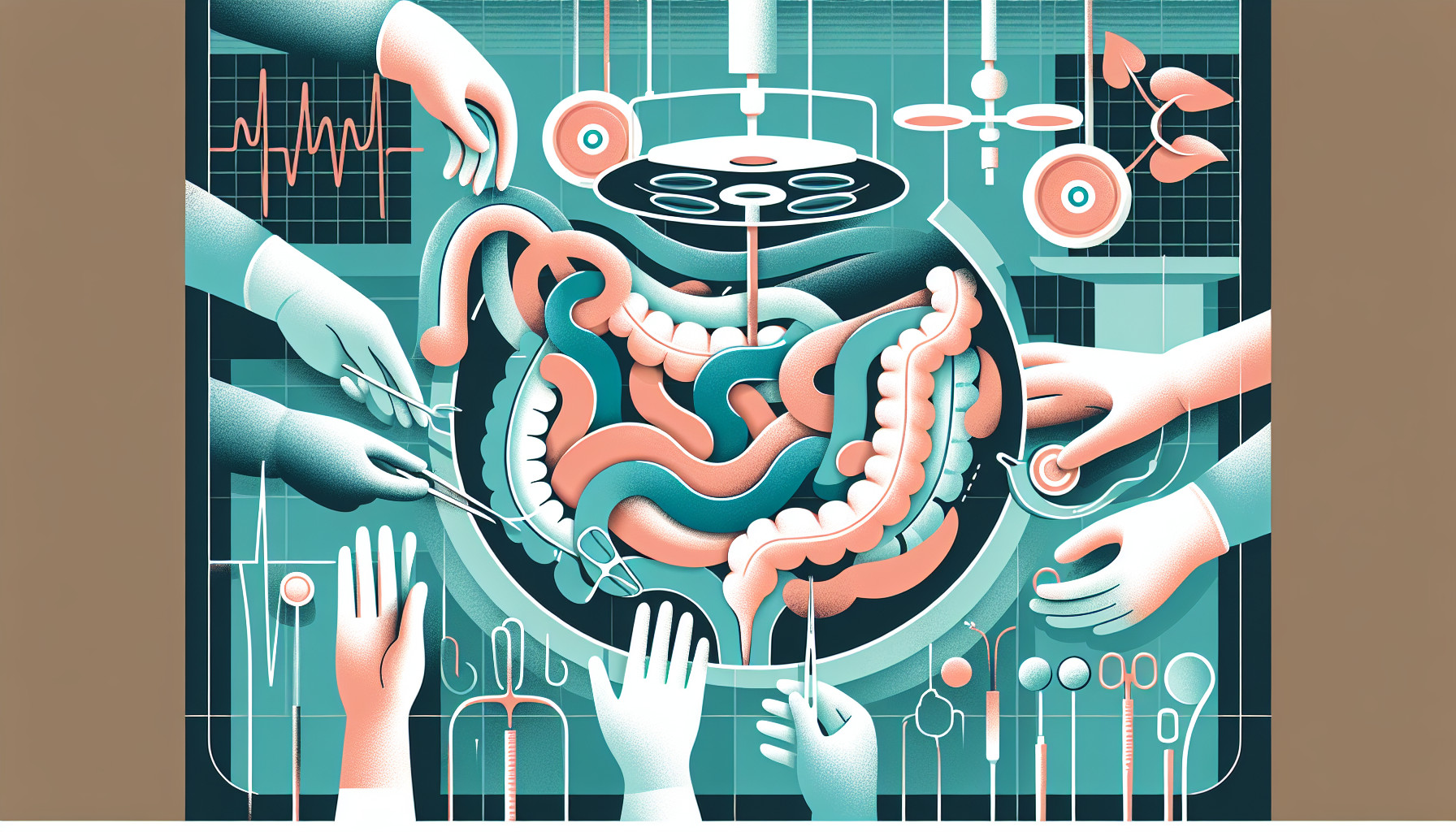Our Summary
This research paper studies the occurrence of incisional hernia (IH) - a common complication that occurs after a colectomy, which is a surgical procedure to remove part of the colon. The study specifically looks at the incidence of IH after minimally invasive right colectomies (a type of colectomy), comparing two types: laparoscopic (done using a tube with a light and a camera) and robotic (done with the help of a robot).
The study involved 276 patients who had undergone either of the two procedures. 69 had undergone robotic colectomies and 207 had undergone laparoscopic colectomies. The results showed that the occurrence of IH was high in both types of surgeries and there was no significant difference between the two.
The only factor that significantly increased the chance of getting an IH was a history of tobacco use. The study suggests that finding ways to reduce the occurrence of IH could help improve the patient’s quality of life and also reduce the burden on the healthcare system.
FAQs
- What is an incisional hernia and how often does it occur after a colectomy?
- Did the study find a significant difference in the occurrence of incisional hernias between laparoscopic and robotic colectomies?
- What factor was significantly linked to an increased chance of getting an incisional hernia after a colectomy?
Doctor’s Tip
One helpful tip a doctor might give a patient about laparoscopic colectomy is to quit smoking or avoid smoking altogether, as tobacco use is a significant risk factor for developing incisional hernias after the surgery. By quitting smoking, patients can reduce their risk of complications and improve their overall outcome following the procedure.
Suitable For
Patients who are typically recommended for laparoscopic colectomy are those who require surgery to remove part of their colon due to conditions such as colorectal cancer, diverticulitis, inflammatory bowel disease, or other benign or malignant tumors. Laparoscopic colectomy is often recommended for patients who are relatively young, healthy, and have a low risk of complications, as it is a minimally invasive procedure that offers several benefits over traditional open surgery, including shorter hospital stays, faster recovery times, and less postoperative pain.
In the study mentioned above, patients who underwent laparoscopic colectomy had a similar incidence of incisional hernia compared to those who underwent robotic colectomy. Therefore, both types of minimally invasive procedures are suitable for patients who meet the criteria for laparoscopic colectomy.
Timeline
- Before Laparoscopic Colectomy:
- Patient is diagnosed with a condition that requires a colectomy, such as colorectal cancer or diverticulitis.
- Patient undergoes preoperative testing and preparation, which may include blood tests, imaging scans, and bowel preparation.
- Patient discusses the procedure with their surgeon and receives information about the risks and benefits of laparoscopic colectomy.
- Patient undergoes the laparoscopic colectomy procedure, during which the surgeon makes several small incisions in the abdomen and removes part of the colon using a camera and specialized instruments.
- Patient is monitored in the recovery room and then transferred to a hospital room for postoperative care.
- After Laparoscopic Colectomy:
- Patient may experience pain, bloating, and discomfort in the days following the surgery.
- Patient is encouraged to walk and move around to prevent blood clots and aid in recovery.
- Patient is monitored for complications such as infection, bleeding, or bowel obstruction.
- Patient is discharged from the hospital once they are able to tolerate a diet and manage pain with oral medications.
- Patient follows up with their surgeon for postoperative appointments to monitor healing and discuss any concerns.
- Patient may experience long-term effects of the surgery, such as changes in bowel habits or the development of incisional hernias.
- Patient may undergo additional treatments or therapies to manage any complications or side effects of the surgery.
What to Ask Your Doctor
- What is the difference between laparoscopic and robotic colectomy in terms of the surgical procedure and recovery time?
- What are the potential risks and complications associated with laparoscopic colectomy, including the occurrence of incisional hernia?
- How common is incisional hernia after laparoscopic colectomy, and what are the factors that may increase the risk of developing it?
- Are there any specific measures that can be taken to reduce the risk of incisional hernia after laparoscopic colectomy?
- How is incisional hernia typically treated, and what are the long-term implications for the patient’s health and quality of life?
- What is the follow-up care and monitoring process after laparoscopic colectomy to detect and address any potential complications, including incisional hernia?
- Are there any lifestyle changes or precautions that the patient should take after the surgery to minimize the risk of developing incisional hernia or other complications?
- What is the success rate of laparoscopic colectomy in treating the underlying condition, and how does the occurrence of incisional hernia impact the overall outcome of the surgery?
- Are there any alternative treatment options or surgical techniques that may be considered to reduce the risk of complications such as incisional hernia?
- How can the healthcare team work together with the patient to ensure optimal recovery and minimize the risk of post-operative complications, including incisional hernia?
Reference
Authors: Widmar M, Keskin M, Beltran P, Nash GM, Guillem JG, Temple LK, Paty PB, Weiser MR, Garcia-Aguilar J. Journal: Hernia. 2016 Oct;20(5):723-8. doi: 10.1007/s10029-016-1518-2. Epub 2016 Jul 28. PMID: 27469592
